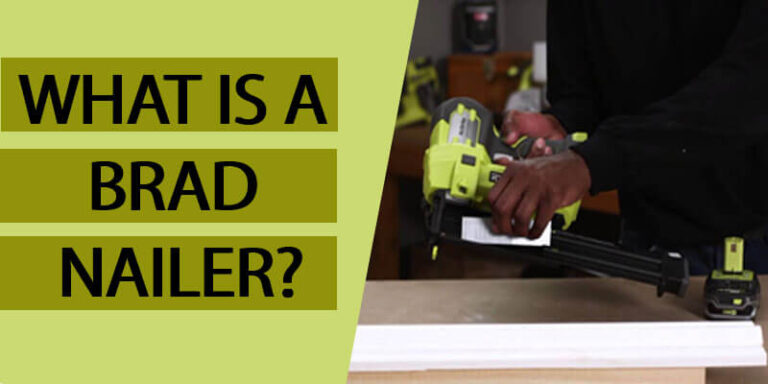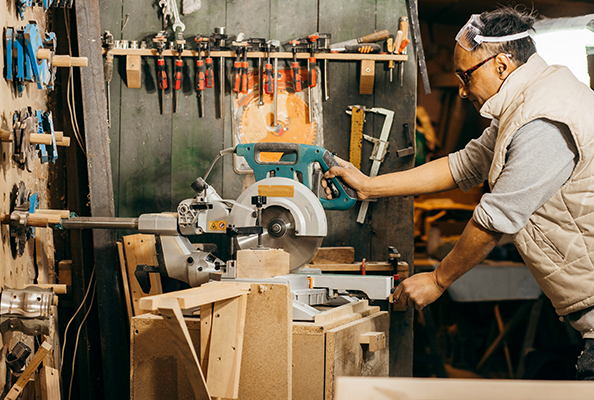7 Best Ways To Use A Band Saw As An Expert
Woodworking is a great hobby to master for one’s pleasure as well as being handy around the house. Now that we are all stuck at home and waiting for the quarantine to end, it is an excellent time to hone your woodworking skills. Brushing up on these skills requires good knowledge of what each tool does, and hence this article on the various band saw uses that might be a useful resource for you. A band saw is a great tool to do some decorative work on your furniture and cabinets, so if you are an amateur, this is the equipment you might want to master.
While trying to describe a band saw, the image of a pair of wheels comes to mind. A slender rotating blade is held on to place by either two or three wheels, along with a table for support and motor for power in a band saw. One can even build themselves a band saw from scratch if they acquire necessary equipment such as the motor, wheels, and other small parts.
Types of Band Saws
-
Benchtop Band Saws: As the name suggests, these band saws are small and lightweight, designed to be used on a workbench or tabletop. They are suitable for light-duty cutting tasks, such as cutting small pieces of wood or plastic. Benchtop band saws are ideal for hobbyists and DIY enthusiasts who do not require heavy-duty cutting power.
-
Floor-Standing Band Saws: These band saws are larger and heavier than benchtop band saws, designed to be used on the floor. They are more powerful and can handle larger pieces of wood and thicker materials. Floor-standing band saws are suitable for professional woodworkers who require heavy-duty cutting power and versatility.
-
Vertical Band Saws: These band saws have a vertical blade orientation and are used for making intricate cuts in wood, plastic, and metal. They are ideal for cutting curves, circles, and irregular shapes. Vertical band saws are popular in metalworking shops and woodworking studios.
-
Horizontal Band Saws: These band saws have a horizontal blade orientation and are commonly used for cutting metal stock. They are ideal for making straight cuts and are capable of cutting through thick metal stock with ease. Horizontal band saws are often found in metalworking shops and fabrication studios.
-
Portable Band Saws: These are handheld band saws that can be used for cutting materials in hard-to-reach areas. They are ideal for construction, plumbing, and electrical work. Portable band saws are lightweight, compact, and easy to use, making them ideal for use on job sites.
-
Resaw Band Saws: These band saws are designed for resawing, which involves cutting a board into thinner pieces. They are ideal for cabinet making and furniture making, where a thin board is required. Resaw band saws are often used in woodworking studios and manufacturing facilities.
Band Saw Uses
A band saw is quite a versatile tool, especially if you want to cut some simple curves with it. If you wish to turn logs into lumber, do some fun wood-crafting cutting up some decorative moldings etc. for furniture and cabinets, the band saw can be your best friend. It can easily cut curves even in thick lumber. Some uses for the tool are crosscutting short pieces, ripping lumber, or creating cabriole legs. However, the most popular use of the band saw is in cutting irregular, not-so-straight shapes. Not only does this type of saw cut through wood, but it is also famous for cutting through other materials such as metal. This is since the band saw makes some of the smoothest cuts ever. If you are a beginner, the following band saw uses or techniques can be helpful to you.
-
Relief Cut
Trying out this kind of cut is a must because it is unique to the band saw. First, cut into the line along with the transition points and the curves. The waste wood is going to fall away as you do the relief cut. Relief cuts are slightly curved, so they require a bit of precision and practice. You need to be a bit careful because while doing relief cuts, the blade tends to bind. To solve this problem, make a cut in a straight line and go back again. In any place where the blade is binding, you can try this technique to get smoother relief cuts.
-
Resawing into Small Pieces
Resawing means cutting up more massive timber into small pieces. You can cut any broadsheet to make it thinner as well. A band saw is excellent at resawing because it can cut shorter surfaces. You will be surprised to find that even a large log can be split into smaller pieces with relative ease.
-
Cutting Metal
A band saw is not just limited to wood. As we have mentioned before, it can cut through more muscular surfaces such as metal or bone. If you have decided to cut metal, be prepared to have rougher cuts than wood. If you use the right blade, it gives a pretty good finish overall.
-
Circular Cuts
Cutting perfect circles is one of the many influential bands saw uses. If you mark a circle on the piece of wood, you can easily cut a perfectly circular piece from it. Find the central point of the circle and make a hole there. At the starting point of your cut, draw a long tangent with the saw. Use something simple to hold the wood piece down easily where you have carved the hole, such as a nail. This will allow the band saw to rotate around the pin easily. The best circular cuts can be made using smaller blades.
-
Laminating Furniture
Lamination allows you to make any shape you desire as it bends together many thin pieces of wood. Most are unaware of the fact that laminating is widespread use of this type of saw. After cutting a few thin slices with the saw, hold them in the shape you like and then attach them with glue. When the glue has dried, the wood piece will be exactly in the form that you have designed.
-
Veneering
Band saws make it very easy to create veneers. With a band saw, you can cut up small pieces out of any large piece of wood. After sawing them, they can be used for various purposes, such as making curved doors or making a small chest of drawers. In this way, any idle piece of wood or cardboard can be made into great pieces of furniture of your choice.
-
Curve Cuts
Due to its small and easily manageable size, curves of any size can be cut from blocks of wood with band saws. For this, you have to mark the exact places that you want to cut, similar to how you would mark for relief cuts. Proceed to cut the small pieces that you have marked like a relief cut, then follow along those lines to get a perfect curve.
Conclusion
Before getting into all these different cuts, do make sure that your band saw’s blade is tensioned correctly, and the guides are well adjusted. It is also essential to take other precautions such as always wearing safety glasses, marking the practice cuts on some scrap wood before working on the actual piece, and making sure that the blade guides are adjusted too. We must remember that proficiency in any tool comes with more and more practice. You will become an expert on these band saw uses in no time.



![How To Use a Bench Grinder Machine [Safety Tips Tricks]](https://woodworkingarena.com/wp-content/uploads/2018/12/Bench-Grinder-Machine-768x516.jpg)

